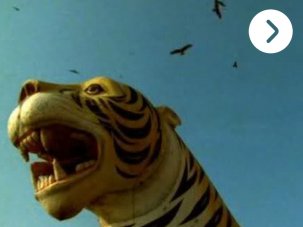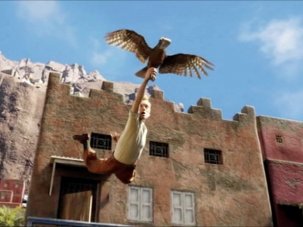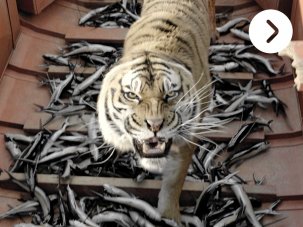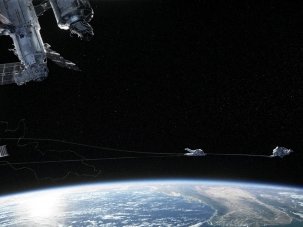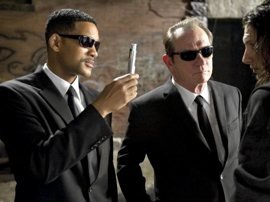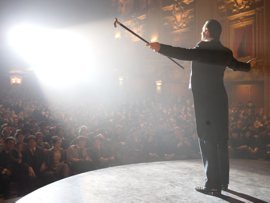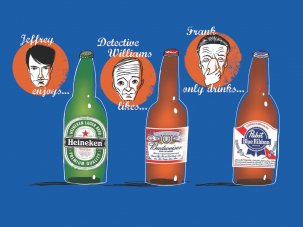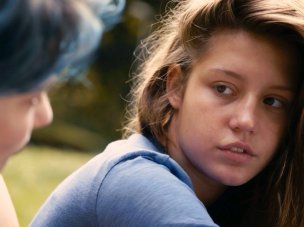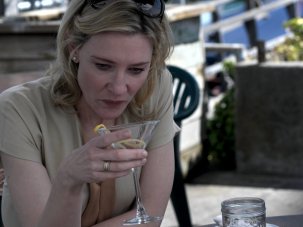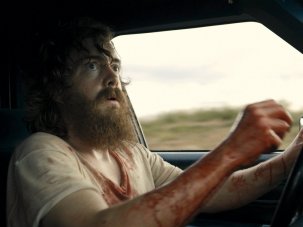Web exclusive
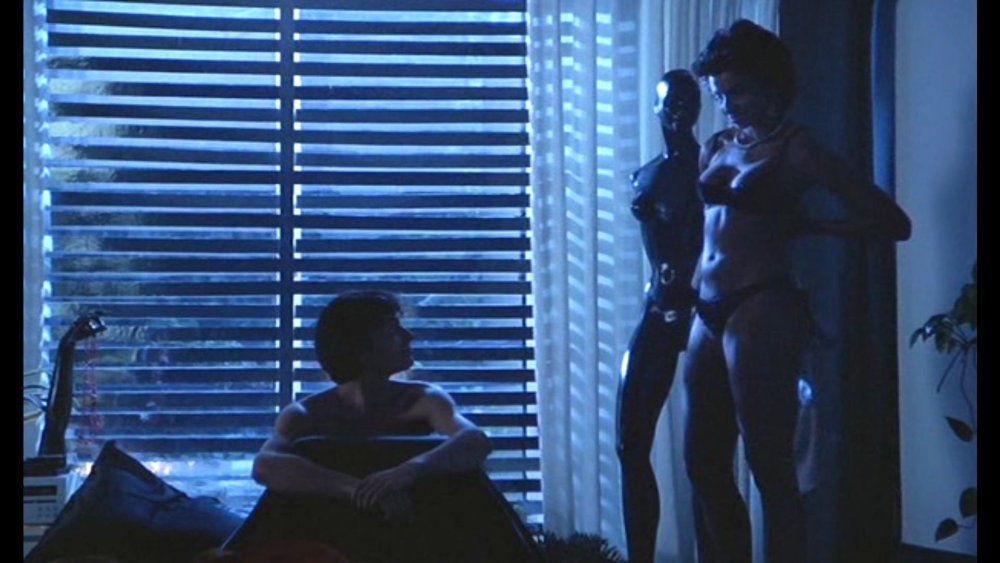
Diva (1981)
“To be, or not to be”, Shakespeare
“To do is to be”, Sartre
“Do be do be do”, Sinatra
— epigraph to Subway (Jean-Jacques Beineix, 1985)
Talking to Le Film Français on the release of his début feature Diva in 1981, Jean-Jacques Beineix said his basic concept was “to make a ‘blue’ film”. In French, this carries none of the suggestiveness of the English term “blue movie”: Beineix was talking purely about the importance of a primary colour palette.
His intent is signalled by the film’s opening shots, a quick succession of still images displaying a clear CMYK colour scheme (to use publishers’ argot). All images are shot at night, black being the key colour (K) against which the others are contrasted. First we see the statue atop the Paris Opera House, the Palais Garnier, backlit by a blue twilight sky (C for cyan). Then, a half-profile shot of the protagonist, postman Jules, wearing a motorbike helmet and bathed in red light (M for magenta).
We cut to another blue shot of the Palais Garnier, then a different profile shot of Jules, this time against a horizontally bisected background, his red motorbike helmet set against a zone of yellow (Y) and his torso against one of blue. The final still image presents a Rolls Royce Spirit of Ecstasy hood ornament next to the bright yellow glow of a headlamp.
This still, however, moves as the headlamp starts to flash on and off – revealing it to be an indicator. A wider shot reveals that the ornament adorns not a Rolls Royce but Jules’s yellow Mobylette, which he parks up before swapping his red helmet for a blue postman’s cap (which matches the rest of his uniform) and heading into the venue where Cynthia Hawkins, the Diva, will give the performance that sparks the narrative.
Diva’s opening title sequence
From the outset, then, Diva offers a space in which aesthetic considerations come before plot progression. Not that the plot is impoverished or lacking – far from it – but we are asked first and foremost to attend to the geometric and chromatic composition of the image before being distracted by movements and plot lines.
Music also plays a key role in this short opening sequence, which is also the opening title sequence. It is accompanied by the opening chords of Gounod’s Faust, a piece that fills the acoustic space of the film apparently non-diegetically. It therefore comes as a surprise when Jules reaches into the black box mounted on the front of his Mobylette and flicks a switch, killing the music and allowing the ambient sounds of his environment to be heard.
While such a shift of music from diegetic to non-diegetic (or vice versa) is not uncommon in the movies, it is normally signalled by a change in timbre and sound mix: characters sing along to a song on a tinny car radio, for instance, before the music swells to fill the whole sound mix, taking on its ‘full’ sound. In Diva, however, there is no such change, again suggesting that this is a unified space defined primarily by aesthetic qualities – an über-cinematic space that has much in common with the opera that is so important in Diva in that it is intended not to represent external ‘reality’ but to dazzle, to put on a show, to entertain and to be concerned only with its own form and appearance. This, then, is the film as diva.
This reading suggests, of course, that the critics (notably those of Cahiers du cinéma) who almost universally panned Diva on its release for its political vacuity and excessively stylised aesthetic completely understood the film whilst spectacularly missing the point.
~
I am not sure that quite the same claim can be made in relation to the critical response garnered by the sequel to The Smurfs (2011) but I do want to suggest that a close reading of this film may reveal it is not just a “smurftastrophe”, as Chris Cabin suggested in Slant, but that something very similar is going on to what we have observed in Diva.
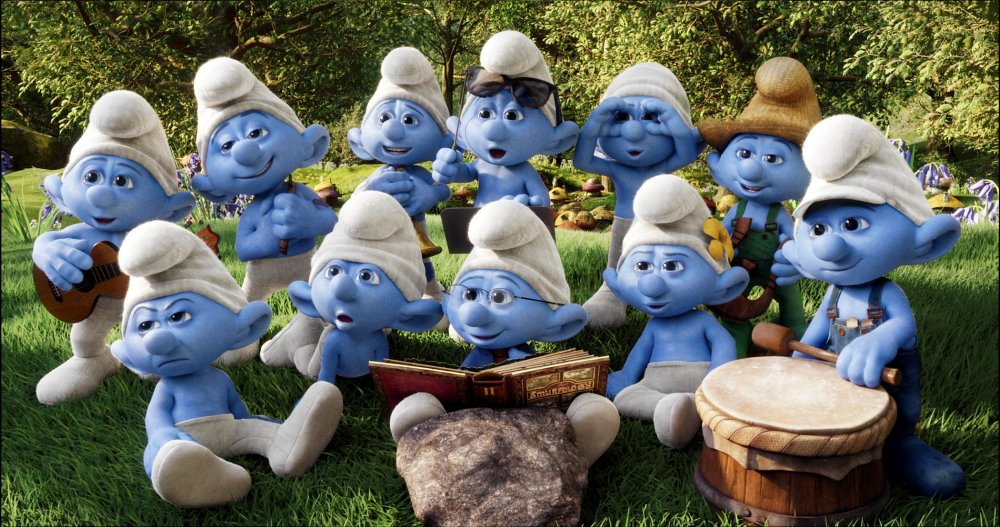
The Smurfs 2 (2013)
Let’s start with the obvious if perhaps groan-inducing similarities. The Smurfs 2 (2013) is also a film in which the colour blue dominates: its plot revolves around the evil sorcerer Gargamel’s pursuit of the magic formula used by Papa Smurf to turn Smurfette blue so he can turn his counterfeit grey Smurfs (or Naughties) blue and extract from them the blue Smurf essence that gives him his powers. Countless blue explosions, wisps, lightning bolts and gags involving the word blue ensue.
Secondly, The Smurfs 2 revolves around the Paris Opera House: Gargamel holds court there every evening, his magic show having become Paris’s hot ticket.
Further, its opening and closing scenes show the same complex interrelations between diegetic and non-diegetic sound evinced at the beginning and end of Diva – scenes that don’t so much trouble such a distinction as render it inoperative, melding everything into a single unified space.
Indeed, this idea of collapsing together different spaces is thematised within a major plotline as Gargamel plans to create a portal that will connect the Smurf Village directly to the diabolical laboratory he has set up in Paris to extract Smurf essence. In addition, through various devices and comments on the shift from analogue to digital technologies and the use of different media, the film appears to comment on its own material ontological properties, which seamlessly commingle CGI with live action.
The Smurfs 2 begins in a wash of blue as superimposed CG images of a blue bubbling potion and Papa Smurf are accompanied by the latter’s voice itemising the potion’s ingredients. We cut to a CG image of an ancient-looking tome entitled Smurfology. The pages are turned, revealing a pop-up book illustrating the Smurf village as the narrator begins to relate its happy history in voiceover (or so it seems). Behind the pop-up paper trees, we see ‘real’ trees, which, we will soon understand, are the same trees as those depicted in the book since we are in the Smurf village.
The Smurfs 2 within The Smurfs 2
What seemed to be a free-floating, fairytale-style establishing sequence turns out to be a village gathering in which this story is being read; the voiceover came not from a disembodied scene-setter but a character in the village, Narrator Smurf. Soon after, what we thought to be non-diegetic music is revealed to be otherwise: as the music’s intensity increases in line with the story’s drama, Narrator Smurf feels obliged to interrupt his tale and scold Smooth Smurf and his musicians for upstaging him.
Then we watch as the mechanics of the pop-up book – a very early form of both 3D and animation – are activated. One of these sends Gargamel’s new creation, Smurfette, tumbling out of his hands and into the blazing pit where her clay form is set in fire, a movement that takes us, with no cut, from the pages of the book into a CGI flashback of the actual creation of Smurfette in Gargamel’s lair.
We return to the book to hear the tale of Smurfette’s transformation into a true blue Smurf thanks to a magic formula and the love of Papa Smurf; all eyes turn to the real Smurfette, who stands atop a waterfall, tosses her golden locks and dives into the lake below. The water, however, starts to wash the blue from her skin and she transforms back into the grey-skinned, brown-haired creation of Gargamel, whom she summons with her dragon wand.
Smurfette through the looking glass
We cut to a bedroom where Smurfette wakes with a start, and realises that this has all been a dream. Papa Smurf arrives to comfort her but after he leaves we hear Gargamel’s voice repeating, “You belong to Gargamel” over and over. This we take to be a haunting auditory remainder of Smurfette’s nightmare.
As the image cuts to the next scene, however, we realise that the soundtrack has simply anticipated the image, for this is in fact a line that Gargamel repeats to an audience member he has suspended in mid-air as part of his Paris show. The pattern is repeated as over this scene is heard the voice of a TV presenter reporting on global ‘Gargamania’; we zoom out from the scene of Gargamel in the Paris Opera House and watch it become an image on a TV screen, next to the presenter.
This movement is then run in reverse as the image within the TV screen changes to YouTube footage of the incident in New York that led to Gargamel’s discovery; we zoom in on this image until it fills our screen to become, effectively, a flashback within the film, there being no pixellation or mark of mediation to establish it as internet footage presented as part of a TV show.
Mediating Gargamel
In these first six minutes of The Smurfs 2, then, we witness the same kind of disregard for the distinction between diegetic and non-diegetic auditory and visual space already seen in Diva. In fact it’s expanded, bringing into one single sphere both textual and paratextual spaces, dream spaces and supposedly real spaces, the past and the present, and analogue and digital forms.
In the context of a film that marries CGI with live action, this last category is, of course, extremely significant – and indeed is explicitly commented on in the film. At one point, Gargamel’s parchment-inscribed evil plan is digitised and put on a tablet by his cat Azrael who, although a product of CGI, is animated in a way that creates less of a disjunct with the live-action human actors than the more obviously cartoonish Smurfs. “Oooh, I’m enamoured with that swiping motion”, comments Gargamel as he works out how to get to phase two of his evil plan.
There are further similarities between The Smurfs 2 and Diva; the latter is also interested in media technologies and the idea of the original and the copy, and the endings of both films involve complex relations between apparently diegetic and non-diegetic sound. But while such comparisons might be intriguing or amusing, they aren’t my main concern here. The crucial thing is that both films create a space that does not obey the exigencies and logic of the outside world, and reflect on the media forms through which they find their own expression. The way they do these things tells us something about the ontology of the cinema.
The cinema has always been about bringing together distinct spaces into one coterminous sphere, whether we think about the spectator watching a film in which a train pulls into a station or an astronaut floats in space, or about the logic of editing. The cinema has also always been about the transport of different times into the infinitely variable presents of its potential audience, a temporal disjunct intensified by the cinema’s fondness for recreating the past or imagining possible futures or, indeed, time travel itself. The cinema has always deployed disjunctive relations between image and sound – perhaps never more so, ironically, than in its early silent days.
The cinema has always necessarily also expressed its own material specificity and talked to us about the technologies through which it comes to be. And the cinema has also always been and remains, to varying degrees (see Malte Hagener’s essay Programming Attractions: Avant-Garde Exhibition Practice in the 1920s and 1930s, in The Cinema of Attractions Reloaded, ed. Wanda Strauven), a space of attractions, of magic, entertainment and artifice.
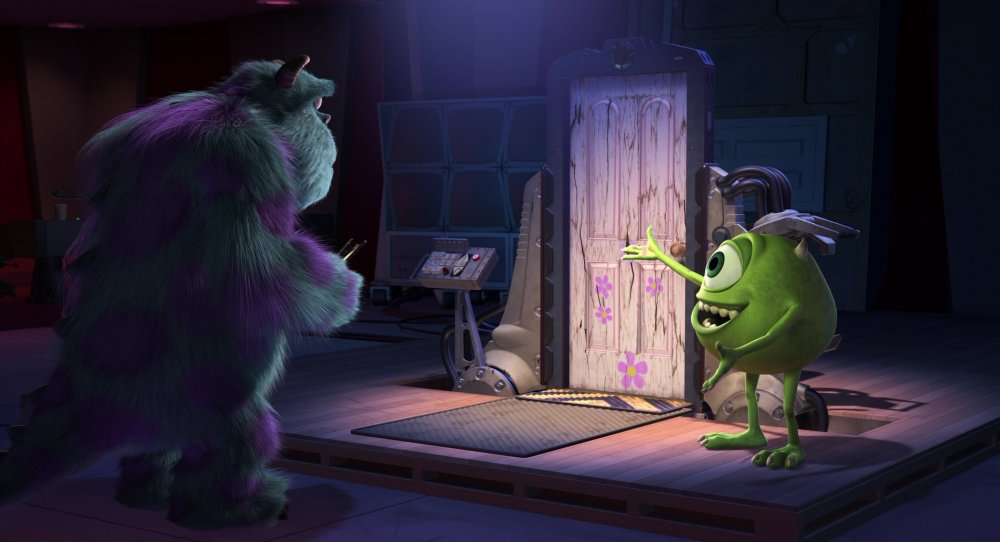
Monsters, Inc. (2001)
The cinema, this is to say, has always been somewhat like a portal that transports us into a space that obeys its own internal logic and requires of us therefore a very different kind of cognitive and sensorimotor response, a space that needs to be engaged with on its own terms. This is a claim that can be and needs to be applied to all cinematic forms, not only those select works canonised in serious philosophical treatises or given the stamp of approval in a certain kind of highbrow criticism. Yet this is a claim that also becomes more obvious, perhaps, in relation to the excessively stylised or fantastical universes we enter into in films like The Smurfs 2 or Diva.
Perhaps, then, these films can be said to be blue movies because, somewhat counterintuitively, they show us cinema in its raw form.
-
The Digital Edition and Archive quick link
Log in here to your digital edition and archive subscription, take a look at the packages on offer and buy a subscription.




